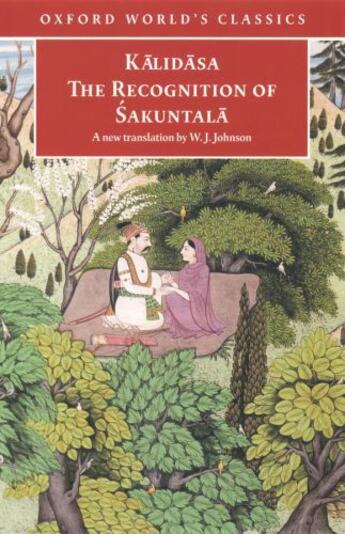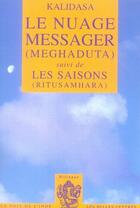-
Nombre de pages : (-)
-
Collection :
(-)
-
Genre :
(-)
-
Thème :
Non attribué
-
Prix littéraire(s) :
(-)
Résumé:
Kalidasa's play about the love of King Dusyanta and Sakuntala, their separation by a curse and eventual reunion, is the supreme work of Sanskrit drama its greatest poet and playwright. This new verse translation includes the famous version of the story from the Mahabharata and an introduction... Voir plus
Kalidasa's play about the love of King Dusyanta and Sakuntala, their separation by a curse and eventual reunion, is the supreme work of Sanskrit drama its greatest poet and playwright. This new verse translation includes the famous version of the story from the Mahabharata and an introduction to classical Indian aesthetics and drama. - ;KING Yes. I shall release you - SAKUNTALA When?
KING When?
When, like a bee, I kiss the bud of your unbruised lip And flood my thirsting mouth with nectar.
Kalidasa's play about the love of King Dusyanta and Sakuntala, a hermitage girl, their separation by a curse, and eventual reunion, is the supreme work of Sanskrit drama by its greatest poet and playwright (c.4th century CE). Overwhelmingly erotic in tone, in peformance The Recognition of Sakuntala aimed to produce an experience of asethetic rapture in the audience, akin to certain types of mystical experience.
The pioneering English translation of Sakuntala in 1789 caused a sensation among European composers and writers (including Goethe), and it continues to be performed around the world. This vibrant new verse translation includes the famous version of the story from the Mahabharata, a poetic and dramatic text in its own right and a likely source for Kalidasa. The introduction discusses the play in the aesthetic and cultural context of ancient India. -
Donner votre avis















